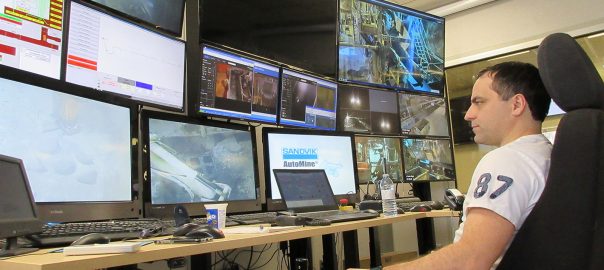Two standout research and field work contributions that have the potential to improve environmental, social and governance (ESG) performance across industry have been awarded the highly respected CEEC Medal for 2020.
Attracting a record 23 high-quality nominations from across the globe, the shortlisted Operations and Technical Research papers showcased exciting site improvements and innovative ideas for future technologies, according to the Coalition for Energy Efficient Comminution (CEEC).
Now in its ninth year, the CEEC Medal recognises the best published papers that raise awareness of comminution research findings, alternative comminution strategies and installed outcomes.
CEEC Director and Medal Evaluation Committee Chair, Dr Zeljka Pokrajcic, said this year’s nominations reflected industry trends to install renewables, consider embodied energy and emissions, and the continued embracing of technologies such as pre-concentration and coarse flotation.
“It’s rewarding to see how industry leaders and experts are collaborating to forge improvements that make good business sense and proactively improve efficiency,” Dr Pokrajcic said.
The 2020 recipients are:
Operations
Peter Lind and Kevin Murray of Newmont and Alan Boylston and Isaias Arce of Metso Outotec, (formerly Metso), for their paper titled, ‘Reducing Energy and Water Consumption through Alternative Comminution Circuits’. This was presented at the 7th SAG Conference in Vancouver, Canada, in 2019.

Technical Research
Dr Grant Ballantyne (pictured), for his paper titled, ‘Quantifying the Additional Energy Consumed by Ancillary Equipment and Embodied in Grinding Media in Comminution Circuits’. This was also presented at the 7th SAG Conference in Vancouver.
Dr Pokrajcic said the winning Operations paper from Newmont/Metso Outotec documents a successful miner/vendor collaboration on how to assess the comminution circuit options in a low energy and water environment.
The paper considers a typical case of a low grade, bulk tonnage copper-gold orebody in an arid climate (Chile, South America) with significant energy costs. It brings together important solutions – including energy-efficient comminution, ancillary equipment, preconcentration and flotation – and presents compelling economic comparisons.
CEEC CEO, Alison Keogh, said of the paper: “This global knowledge sharing offers real value for decision-making across the globe. The paper’s practical, systematic technology approach, which incorporates all-important financial analysis, has the potential to accelerate industry’s progress to deliver lower footprint minerals.”
The paper’s co-authors, Lind and Boylston, explained that the work was the result of collaboration between many innovative thinkers, with ideas and approaches built over many years.
“We wanted to make a difference, to bring technologies together to show that you can save energy, save water and save money as well. This was a group effort, not only by our extended teams at Newmont and Metso Outotec, but also involving Steinert and Scantech in working through how to apply technologies,” they said.
The CEEC Medal Evaluation Committee praised the winning Technical Research paper from Dr Ballantyne as being “an impressive approach to capturing and quantifying energy consumption of ancillary equipment and energy used to manufacture and transport grinding media”.
The paper shares insights on embodied energy using data collected from sites and presents results on the CEEC Energy Curves.
“The research presents a broader approach that considers the impacts of not just energy used in particle breakage but also embodied energy in the manufacture and transport of grinding media, and energy used in the operation of ancillary equipment such as conveyors and pumps,” Dr Pokrajcic said.
“Bringing this spotlight to embodied energy has strategic value. Many companies are including investigation of supply chain in their procurement decisions.”
Dr Ballantyne, previously a Senior Research Fellow at the Julius Kruttschnitt Mineral Research Centre (JKMRC), and now with Ausenco, noted that his work started in 2012, building on earlier concepts shared by industry at a CEEC workshop in Australia. These concepts were developed further following industry input at the 2015 SAG Conference in Canada.
“I also acknowledge the inspiration and collaboration of Chris Greet (Magotteaux), Evert Lessing (formerly Weir, now Metso Outotec), Malcolm Powell (formerly The University of Queensland) and Greg Lane (Ausenco) for contributing expert input and data to the work,” Dr Ballantyne said.
“New research ideas and collaboration with industry are key to industry innovation,” he said. “Support and mentoring from these suppliers as well as experts from Ausenco and The University of Queensland ensured these new ideas could be published for industry to progress thinking.”
In addition to the two CEEC Medals awarded in 2020, three publications received High Commendations.
High Commendations – Operations
Ben Adair, Luke Keeney, and Michael Scott from CRC ORE, and David King from Minera San Cristóbal operations, for their paper titled ‘Gangue rejection in practice – the implementation of Grade Engineering® at the Minera San Cristóbal Site’. This was presented at Physical Separation 2019, in Cornwall, United Kingdom.
This paper shares the prediction and outcomes of a Grade Engineering pilot at Sumitomo’s Minera San Cristóbal operations in Bolivia. The work identifies ore amenability and levers to optimise up-front rejection of gangue before processing.
Keogh said: “This approach highlights the scale of the opportunity for mining leaders to invest in unlocking hidden value for shareholders through productivity step-change while significantly reducing impact on the environment.”
High Commendations – Operations (continued)
Malcolm Powell, Ceren Bozbay, Sarma Kanchibotla, Benjamin Bonfils, Anand Musunuri, Vladimir Jokovic, Marko Hilden, Jace Young and Emrah Yalcin, for their article titled ‘Advanced Mine-to-Mill Used to Unlock SABC Capacity at the Barrick Cortez Mine’. This was presented at the 7th SAG Conference in Vancouver.
This work was a collaboration between three organisations: JKMRC at The University of Queensland’s Sustainable Minerals Institute, Barrick’s Cortez mine and JK Tech. It shares an advanced mine-to-mill approach that unlocks improved SABC production capacity at Barrick’s Cortez mine in Nevada, USA.
Dr Pokrajcic said the article was an excellent review of the dynamic between SAG and ball mills, illustrating how mine-to-mill, with the consideration of blast movement as well as fragmentation, and operation-wide optimisation could empower sites to identify and sustain long-term improvements.
“It highlights the opportunity of operationalising cooperative ore blend control to balance energy use across the milling circuit, reducing specific energy consumption while benefitting from increased production,” she said.
High Commendation – Technical Research
Paul Shelley and Ignacio Molina (Molycop) and Dimitrios Patsikatheodorou (Westgold Resources), for their paper titled ‘SAG mill optimisation insights by measuring inside the mill’. This was presented at the Procemin-Geomet Conference in Santiago, Chile, in 2019.
In a first for industry, this innovative approach aims to collect data from sensors inside the grinding balls within grinding mills, CEEC said. It brings potential application for high frequency measurement of temperature and impacts inside the mill.
Dr Pokrajcic said: “If this early work can be successfully commercialised and scaled up, it could bring new insights that link to operational and energy efficiency improvements.”
Keogh said nominations for the 2021 CEEC Medal were now open, and she encouraged the submission of relevant, ground-breaking articles from online events and industry presentations.
“Because of disruptions to physical events, we have extended the closing date for submissions to October 30, 2021.”
Details of the application process for the 2021 CEEC Medal can be found here.











